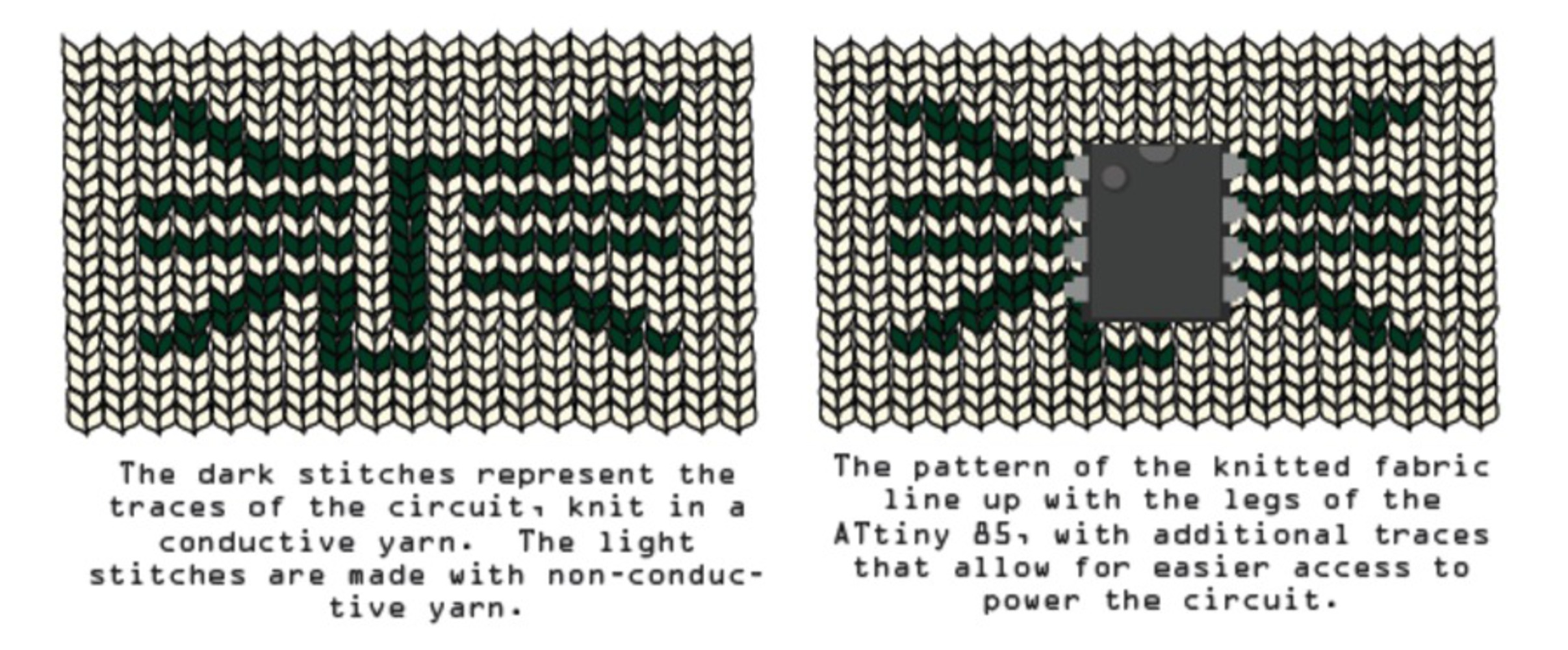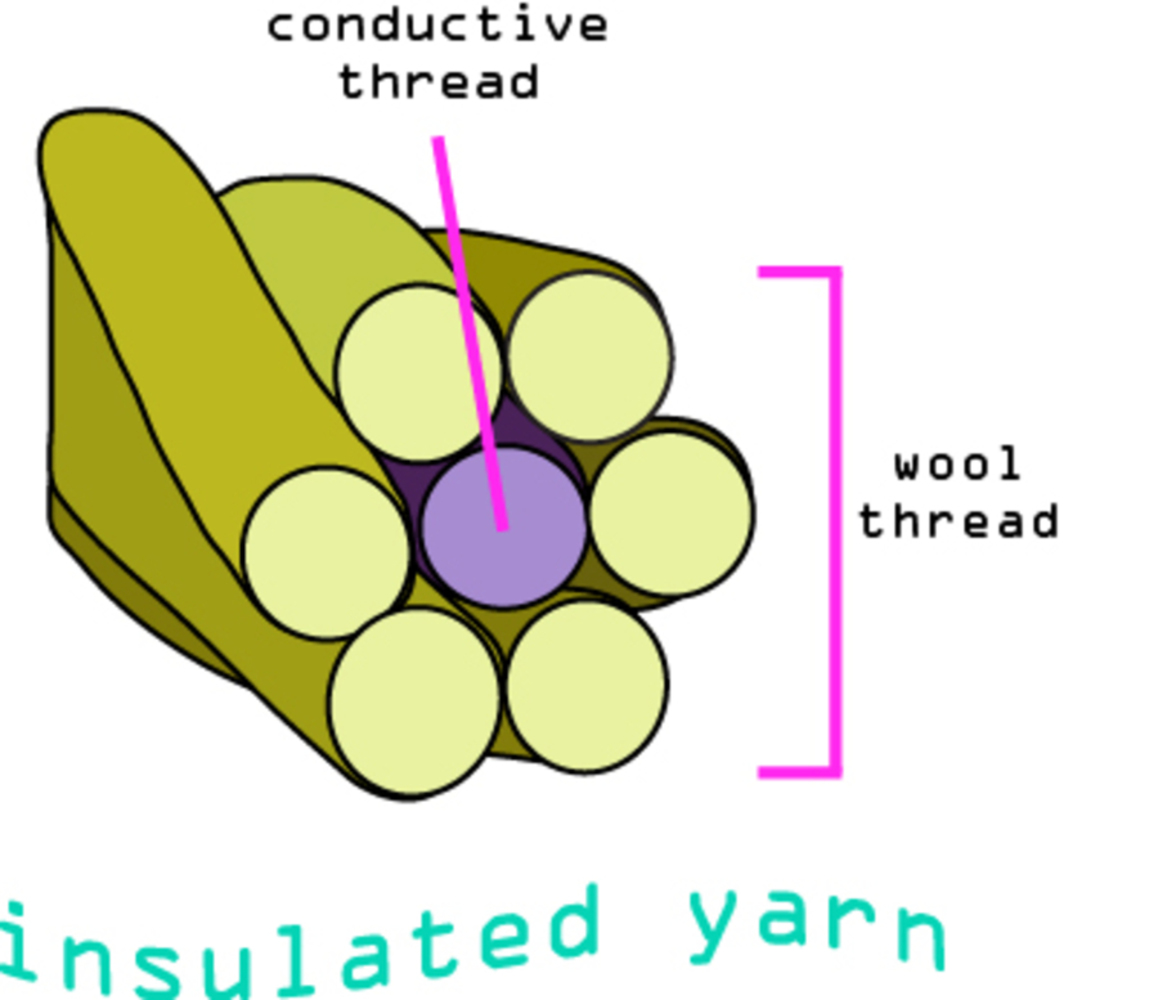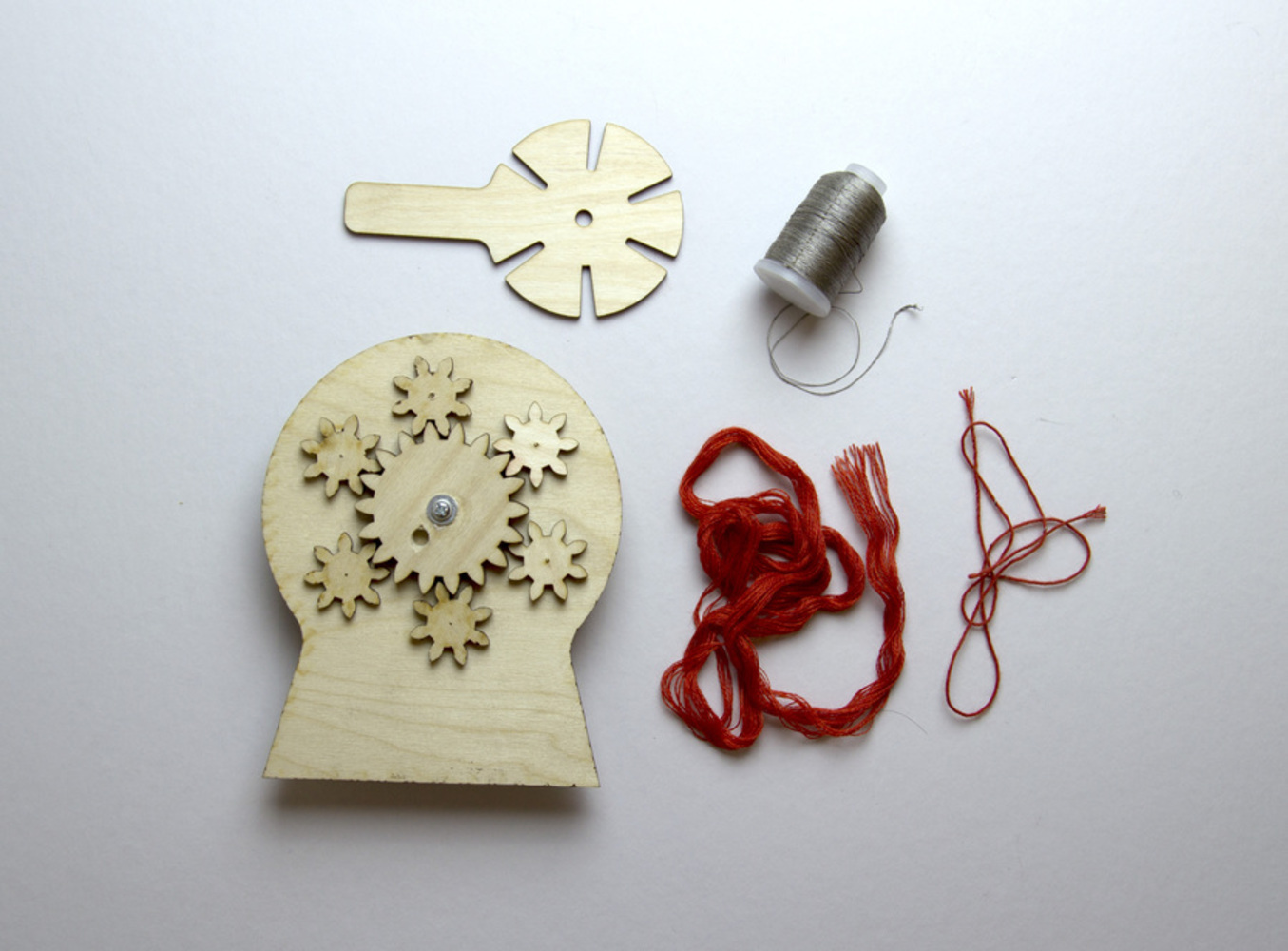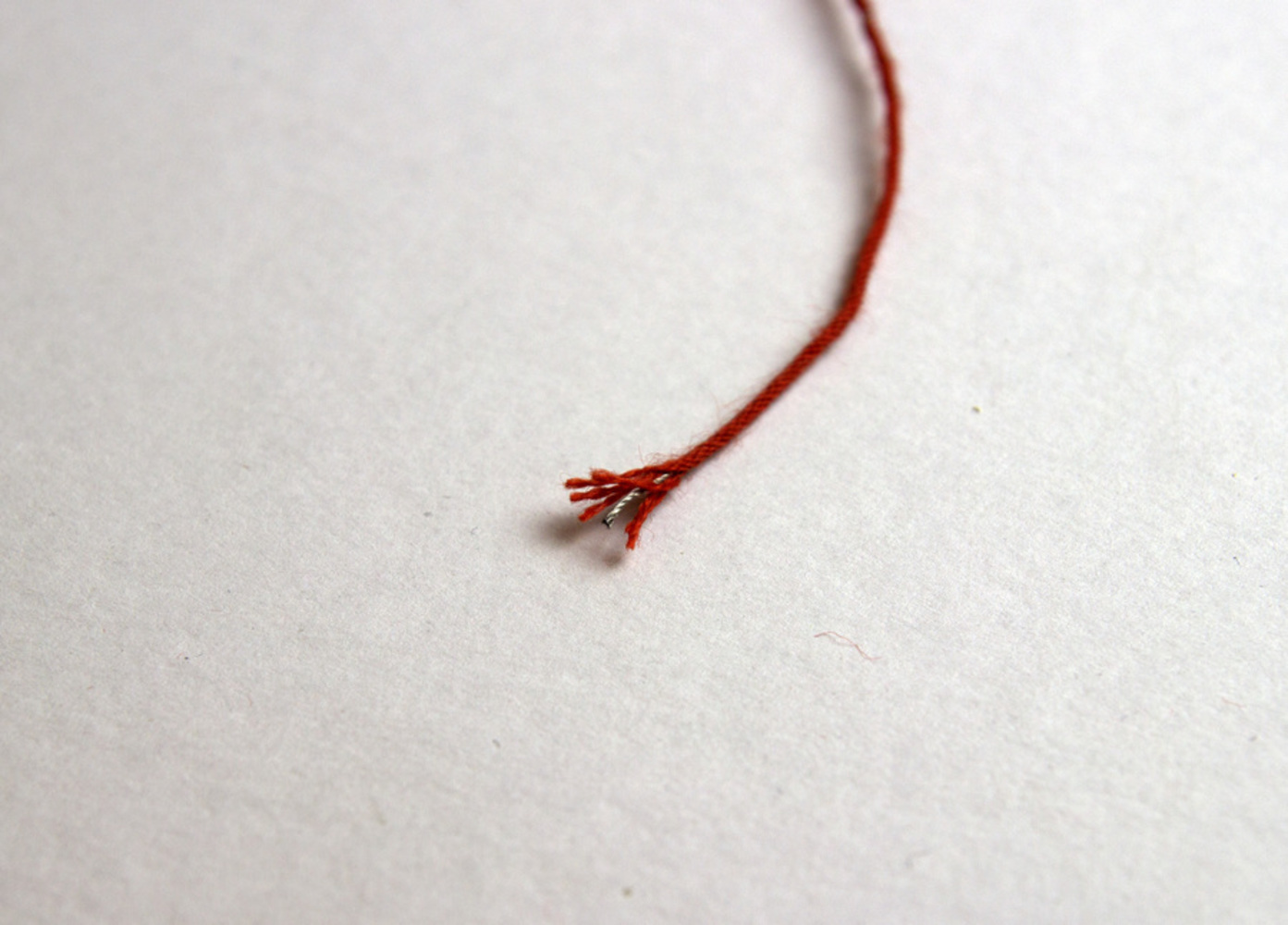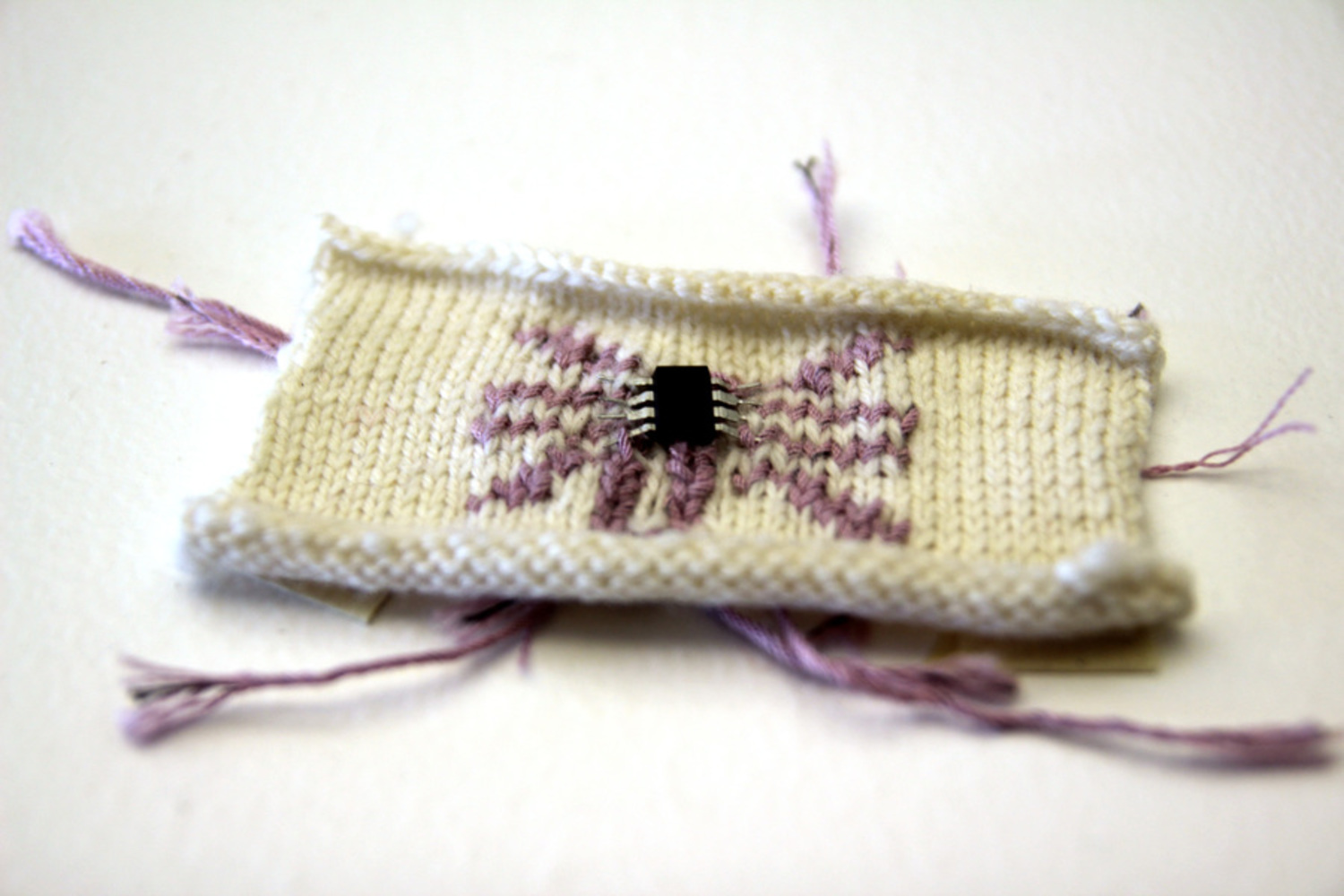Different textile methods have been used to create conductive paths for circuits. This includes sewing, applique, and weaving with conductive and nonconductive materials to create these pathways. Different projects have been made with knitting and electronics, however usually in the form of creating sensors or breadboard surfaces. In this project, I wanted to combine traditional methods of color knitting (intarsia) with using conductive and nonconductive materials to create traces for an ATtiny85 microcontroller. By investigating and creating this process, this can lead to explorations in more complicated knitted circuit boards or large scale productions of this process.
Why knit?
Knitted fabrics can be constructed from different materials with minimal waste. Rather than cutting a larger fabric down to specific shapes, knitted fabrics can be directly constructed into those shapes. By knitting with conductive and nonconductive yarns, a circuit can be knit into the fabric using intarsia, a traditional method used for creating patterns. This process would create a soft, flexible circuit that is constructed and embedded with the conductive materials to create connection points.
Precedent work:
Jesse Seay has developed a method of knitting with wire and soldering components to create a wearable circuit. Although this allows for open forms of creation like with a perfboard, it is not entirely suitable for wearables considering its potential to scratch the wearer or create short circuits while wearing.
Andrew Quitmeyer has created a lasercut, appliqued textile breakout board for an ATtiny85. This inexpensive board can be easily reproduced to work with technology while out in the wild. This work inspired the use of the ATtiny85 since it's an inexpensive and versatile component, and not have to rely on ever shifting and changing designs of existing wearable microcontroller designs.
